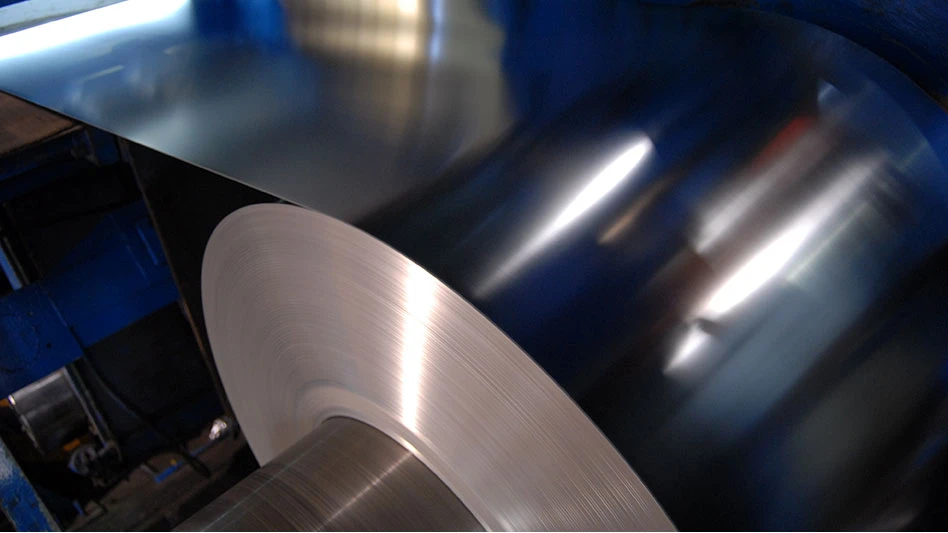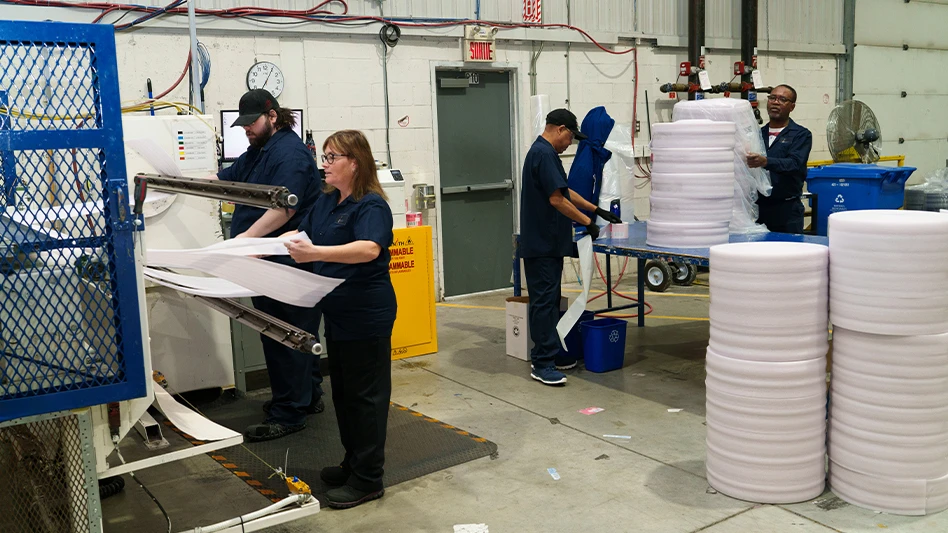 Throughout the previous and the current decade, export markets in China have prompted recyclers of metals, paper and plastic to become familiar with the logistical procedures required to ship their materials to that nation.
Throughout the previous and the current decade, export markets in China have prompted recyclers of metals, paper and plastic to become familiar with the logistical procedures required to ship their materials to that nation.
China continues to buy considerable volumes of scrap materials from North America (and other parts of the world), but statistical evidence is beginning to mount that China’s appetite for most types of imported scrap has peaked.
For recyclers positioned to export, the prospect of serving markets in India and the ASEAN (Association of South-East Asian Nations) region holds some promise, although determining how to overcome shipping obstacles is among the foremost challenges.
New frontiers
China has never been the leading overseas destination for ferrous scrap, but reductions in purchases by mills in China and other East Asian countries has some recyclers exploring other options.
At the Ferrous Division meeting at 2015 Bureau of International Recycling (BIR) World Recycling Convention in Dubai, United Arab Emirates, in May, Ferrous Division President William Schmiedel commented, “We see potential growth in ferrous scrap demand in GCC (Gulf Cooperation Council) countries as well as Egypt and India.”
Referring in part to the GCC nations (Bahrain, Kuwait, Oman, Qatar, Saudi Arabia and the United Arab Emirates), Schmiedel, a trader with New York-based Sims Metal Management, said the scrap demand “is mostly due to construction projects along with oil and gas [sector demand] and other infrastructure development.”
A large-scale wager
In the past several years, ocean freight companies have ordered and built increasingly large container ships, convinced that there was yet room for developing greater economies of scale with larger ships.
An analysis from the Wall Street Journal in early June 2015, raises the possibility that the ship owners may have placed a large wager on a questionable strategy.
As the massive new ships are being introduced, “freight rates hover around record lows and demand for ocean shipping is weak,” writes the Wall Street Journal’s Costas Paris.
Ships in the new “ultra-large” category, capable of carrying 19,000 or more containers, are adding to an overcapacity problem on the world’s busiest routes that is suppressing per-container freight rates.
Operators of smaller ships are not ceding the market to operators of the largest ships (such as Denmark’s Maersk Group or Switzerland-based Mediterranean Shipping Co.), resulting in what Paris describes as a “price war” with rates as low as $300 per container..
Maersk Group is not backing away from its strategy, and within 24 hours of the Wall Street Journal story, it announced the purchase of 11 additional 19,000-container-capacity ships from Daewoo Shipbuilding & Marine Engineering of South Korea.
George Adams of SA Recycling, Anaheim, California, said the South Korean market has been quiet recently due to increased exports from Japan and a movement away from container imports of ferrous material. Adams referred to Taiwan as “a steady buyer of ferrous scrap albeit at ever-decreasing prices.”
A potential growth market, Adams said, is the ASEAN region, which includes mills and foundries in Indonesia, Malaysia, Thailand and Vietnam.
“This market has been active recently, procuring several cargoes,” he said. “Their market re-entry has partially been aided by lower [steel] exports from China.”
Meanwhile Zain Nathani of India’s Nathani Group of Companies said Indian steel mills, foundries and induction furnace operators imported 4.4 million tonnes of ferrous scrap between April 2014 and January 2015.
India buys containerized and bulk shipments from the U.S., Australia and the United Kingdom, said Nathani, adding that in 2015 “a lot of Japanese [ferrous scrap] exporters are beginning to focus on India.”
At the BIR event, Hisatoshi Kojo of Japan’s Metz Corporation confirmed that Japanese exporters are seeking out new destinations for their scrap. “Crude steel production is stalling in Taiwan and South Korea, such that scrap purchasing momentum in these major importing countries is not like it was,” he stated.
Kojo also pointed to the ASEAN region as being of growing importance. “Steel mills in Southeast Asia boosted their purchasing activity as soon as they saw the Japanese scrap market price reach the bottom in mid-March 2015,” he stated.
What has happened in the ferrous market also is happening with aluminium, copper, recovered fibre and plastic.
Potholes and waves
Getting scrap materials to many of these emerging markets can be the tricky part, as was discussed during a session at the 2015 Paper Recycling Conference India event, held in New Delhi in late January.
Exporters to India are commissioned to “try to work through a lot of the challenges of shipping to India [and] none of them are easy,” said Michael Belus of GP Harmon Recycling, Jericho, New York.
Belus and his fellow panelists described several considerations that importers and exporters of recovered fibre face when conducting business in India.
Session moderator Atul Kaul of Saudi Arabia-based WARAQ Arab Paper Manufacturing Co. Ltd. commented that some 40 million tonnes of recovered fiber were traded across a national boundary in 2014, and that logistics and shipping are critical factors in all such transactions.
Belus, who as senior director of international business at GP Harmon helps oversee the company’s business in India, said GP Harmon’s challenge begins with the fact that the company trades with “224 active [mill] customers in India, which gives you a sense of how fragmented the market is.”
Locations near ports and rail sidings “area a strategic advantage” for mills, said Belus, as this helps them avoid India’s “high inland transportation costs.”
Panelist Ranjit Baxi of J&H Sales International, London, said because of scrap paper’s relatively low value, freight and delivery charges represent some 40% of the cost of a transaction. This compares to an industry average of 12%.
The better news for recovered fibre traders, said Baxi, is that “freight is no longer a black box. It maybe was 30 years ago, but now it’s transparent.”
Also providing good news is that despite recovered fibre’s low value, “Shipping lines like scrap paper as a backhaul,” stated Baxi. “It helps them reposition their boxes” as a “guaranteed cargo” for containers returning to Asia after having brought finished goods from Asia to Europe or North America.
That hasn’t made holding down shipping costs easier, Baxi added, with the multiple considerations in play including the rates of the shipping alliances, currency fluctuations and global economic factors such as volatile oil prices.
Among India’s challenges will be upgrading its ports to handle ever-larger container ships, said Baxi. The nation will also need to upgrade its road and rail networks to handle a growing amount of global trade as it strives to become the world’s third largest economy by 2020, he added.
Offering similar comments, Nathani, in a later interview, says shipments of ferrous scrap from the Middle East to India have the fastest voyage time compared with other common routes, taking anywhere from seven to 10 days. Similarly, he says inland transportation to the final destination in India adds anywhere from one to 10 days, depending on the location. Nathani says the biggest challenges when shipping ferrous scrap to India are the common incidences of port congestion and delays. Further, he adds, “the cost of moving containers inland via road is very high, hence [the buyers are] overly dependent on an already stretched railways system. In addition, Nathani says, there is little consistency when it comes to customs clearances at various Indian ports.
Passing inspection
Overcoming the logistical challenges may be in the best interest of nonferrous recyclers and traders, with the secondary aluminium industry in India growing at a rapid pace.
Mohan Agarwal of secondary aluminium producer Century Metal Recycling, Palwal, India, foresees Indian demand for aluminium scrap continuing, in part thanks to the seven facilities operated by his company.
Century’s seven smelting facilities produce up to 225,000 tonnes per year of secondary aluminium alloys.
Demand for aluminium alloys will grow along with India’s automotive sector, said Agarwal. India is currently the second largest two-wheel motorized vehicle producer in the world and the seventh-largest automaker. India “is expected to become the world’s third-largest auto producer by 2020, with 7 million units annually,” he said.
Since 2014 India has been exporting more small cars than Japan, said Agarwal, and it will also continue producing such vehicles for its growing middle class. “More and more car manufacturers are looking at India,” said Agarwal, adding that they are locating both assembly plants and research and development facilities in the nation.
However, recyclers who ship scrap metal to India are dealing with a new container inspection regimen as of this spring. Ikbal Nathani, an officer of the Metal Recycling Association of India (MRAI) told attendees at the BIR event that numerous government agencies were involved in creating the new system, with the foremost concerns tied to preventing radioactive scrap and live munitions from entering the country.
Speaking more recently, Zain Nathani says the latest import provisions have led to confusion in the market, with some foreign sellers halting exports to India for a time. Now, he says, “there is more clarity, but lots of challenges and hurdles remain.”
Between the new customs rules and the challenges of inland transportation, recyclers shipping to India will need to do their homework to ensure materials make it in a timely fashion to their destinations.
The author is editor of Recycling Today Global Edition and can be contacted at btaylor@gie.net.
Latest from Recycling Today
- Nucor names new president
- DOE rare earths funding is open to recyclers
- Design for Recycling Resolution introduced
- PetStar PET recycling plant expands
- Iron Bull addresses scrap handling needs with custom hoppers
- REgroup, CP Group to build advanced MRF in Nova Scotia
- Oregon county expands options for hard-to-recycling items
- Flexible plastic packaging initiative launches in Canada





